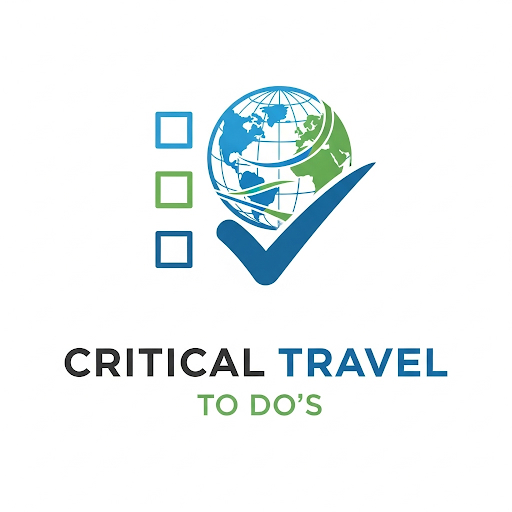
Don’t let language barriers risk your health. Discover the essential travel tools that help you communicate your food allergies with confidence.
Free digital guides deliver reliable support for travelers managing food allergies, whether exploring nearby cities or venturing abroad. Three essential must-do principles (—Plan, Follow, and Prepare for Emergencies—), food allergy alert cards critical information , tips for clear communication in unfamiliar settings, essential pre-travel advice, insights into international food labeling practices, and checklists to help you plan with confidence and peace of mind.

Must To Do’s
Checklist with
21 Links

Essential Travel Guide
Essential tools that help you communicate your food allergies

Checklist for Flying
Curated List to Follow
12 Links to Help

Allergy Alert Cards
Comparisons/Languages/Problems
Pros-Cons/Problems/Careful with Peanuts

Foreign Food Labels Differ
Different Countries
Different Allergens

Learn From My Mistakes
50 Years+ / 35 Countries+
Lots of Learning Experiences
Checklist for Flying
Comprehensive checklist for allergy management while traveling abroad with food allergies reveals essential tips and tricks from 50+ years of real-world experience and cutting-edge AI-powered searches.
- Research Destination-Specific Regulations: Learn about local food labeling laws and common allergens in the regions you plan to visit. Countries vary in their allergen disclosure requirements, and ingredients may have different names across cultures.
- Plan Ahead with Airlines: Contact airlines in advance to discuss policies regarding allergen-free meals and cabin safety measures.
- Pack Essentials: Bring safe snacks, necessary medications, and extra epinephrine auto-injectors to minimize risk.
- Engage Airlines: Notify the airline of your allergies when booking, confirm arrangements at check-in, and communicate with the flight crew about your needs.
- Create a Safe Space: Wipe down seats, trays, and armrests to prevent cross-contact. Avoid consuming airline-provided meals unless you are certain of their safety.
Communication is Key!
Discover essential tips for communicating food allergies while traveling, both domestically and internationally. Learn how to create effective allergy alert cards, use smartphone apps wisely, and navigate language barriers.
- Allergy Alert Cards: These cards clearly state your allergies in the local language, helping you navigate restaurants and grocery stores safely.
- Smartphone Apps and Translation Tools: Use trusted apps to translate allergy terms accurately. Be aware that translation errors can lead to severe misunderstandings.
- Bracelets and QR Codes: Wear medical alert jewelry or use scannable QR codes that link to detailed allergy information.
Benefit from my experience
My experience from countless international trips, having an international family with severe food allergies, researching websites, and interviews with fellow food allergy sufferers. My practical advice for fellow allergy sufferers their next adventure is …
On international travel with food allergies, bad translations of food allergies can be life-threatening. Navigating ingredient names across different languages and regions adds a layer of complexity for those with food allergies. More troubling the same ingredient may have different names depending on the location, leading to potentially dangerous misunderstandings. For instance, peanuts in Mexico are “cacahuètes” in other Spanish speaking countries “Mani”. Even subtle misinterpretations can have severe consequences.
Foreign Food Labels Are Different
What’s considered a major allergen in one country might not be in another? For example, in the US, there are nine major allergens that must be labeled, while in the UK and EU, there are 14! And it gets even more complicated when products are imported or exported. Familiarize yourself with the local food allergy landscape.
There are countless ways to communicate your food allergies. After trying them all, I’ve learned that what sounds great in theory doesn’t always work in practice. Many solutions come highly recommended, but in real-world situations, they often fall short.
Various tools aim to assist allergy sufferers while traveling, but their efficacy can vary.
- Allergy Alert Cards: Images help prevent possibly fatal translation errors.
- Alert Cards vs Apps: While cards are universally useful, apps may fail in areas with weak internet connectivity or unfamiliar dialects.
- Medical Bracelets: These remain a reliable, low-tech option, especially for emergencies.
30+ Links for Traveling with Food Allergies
Actionable Takeaways
- Research Your Destination: Labeling laws and nearby hospitals
- Prepare Allergy Alert Cards: Images and translations of food allergies
- Stock Up on Medications: Bring sufficient EpiPens and translate prescriptions
- Learn Basic Phrases: Learn essential phrases
- Pack Essential Supplies: Bring non-perishable snacks and any necessary utensils
Related Reading
- Allergic Living’s Airlines & Allergies Guide: International 2025
- Allergic Living’s Airlines & Allergies Guide: Domestic 2025
- Miss Allergic Reactor: Personal experiences of international travel
- Flying with Kids: Tips for a Successful Airport Experience : Follow these parent-tested tips to ensure a smooth flight to no matter where you’re flying with kids.
- FARE’s Food Allergy Travel Guide: IFAA Travel Tips are comprehensive resource with links to vital travel information for a number of countries. USA example
- FAACT’s Traveler’s Checklist: A practical tool for ensuring you’ve covered all bases in your travel plans.
- Airlines and Allergies: The Best and Worst Airlines For People With Food: FoodAllergy.org report of their research by airlines´ websites, travel blogs, food allergy blogs, and other news sources as well as contacting the airlines by email, phone, Whatsapp and Facebook Messenger
- FARE Tip Sheets: Tips for thirteen countries including 911 numbers, EpiPen availability, labels, and more
- Airlines and Allergies: The Best and Worst Airlines For People With Food Allergies :Fare Teen Advisory Group members research of airlines´ websites, travel blogs, food allergy blogs, and other news sources. They contacted the airlines by email, phone, Whatsapp and Facebook Messenger and contacted a total of 36 airlines,
- Airline food allergy policies
- Nut Policies for 60 Airlines
- Food Allergy Travel Hub
- Allergens on Airlines: Safety, Precautions, and Passenger Rights
- Allergy UK: Links to sections on Planning ahead, Flying with a food allergy, Backpacking and excursions, Advice for young adults travelling, Socialising, festivals and events, Allergy Translation Cards, Travelling with an allergic infant
- FoodAllergy.world Travel/Communication Section: Do’s and Don’t’s for communicating your allergies
- FoodAllergy.world SOS Abroad/911 Abroad Section: 911 is not the same in all countries
- FoodAllergy.world Travel/Bad Translation Can Kill Section: Translations may change between countries with the same language.
- FoodAllergy.world SOS Abroad/Technology Section: Technology is key to survival with food allergies abroads
- FoodAllergy.world SOS Aboard/Beware Allergy Alert Cards Section: Food Allergy Alert Cards problems
- FoodAllergy.world SOS Aboards/Food Allergies Not Global Section: Internationally your allergy maybe unknown
- Allergy Alert Cards in 40 languages for 56 allergens: Allergy Alert Cards translations
- Allergy Alert Cards in 15 languages for 12 Phrases and 32 allergens: Allergy Alert Cards translations
- Allergy Alert Cards in 11 languages for 2 Phrases and 8 allergens: Allergy Alert Cards translations
- FoodAllergy.world Travel/My Personal Experience: Learn from by thousands of miles of international travel
- Emergency Country Codes: 911 in foreign countries
- Earth Trekers: Great information from personal experience with details for numerous countries
- Invisibly Allergic: Reviews of airlines
- FoodAllergy.world Travel/Checklist Section: Collected checklist from the resources used for this website
